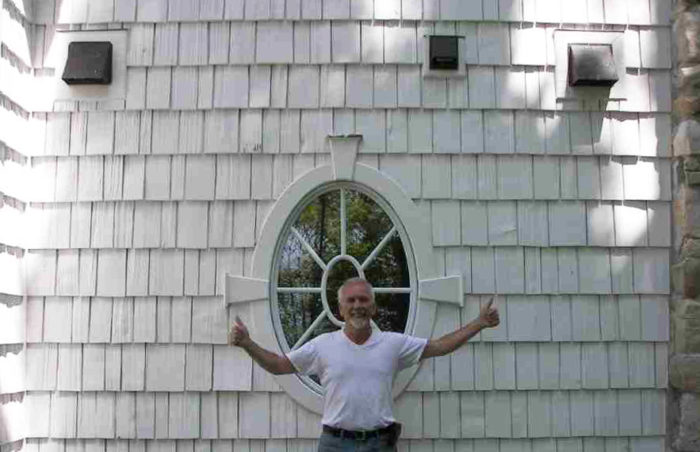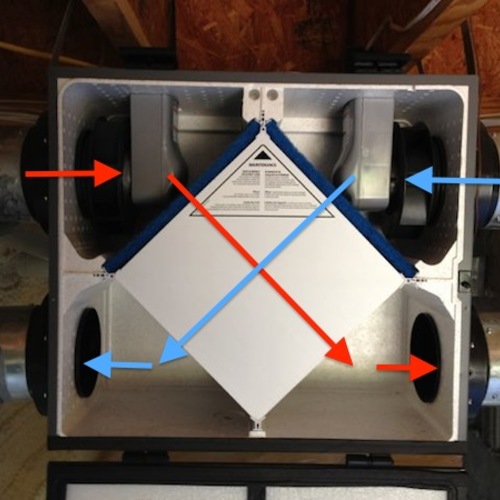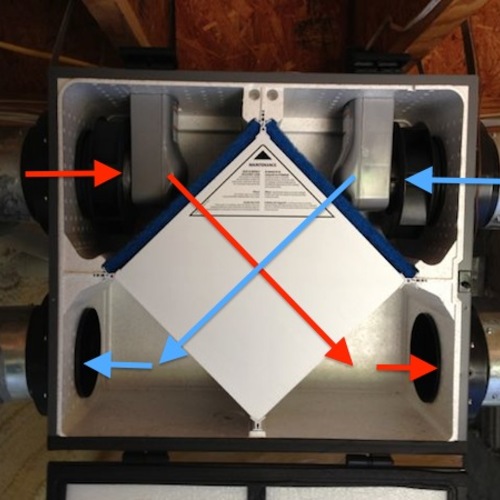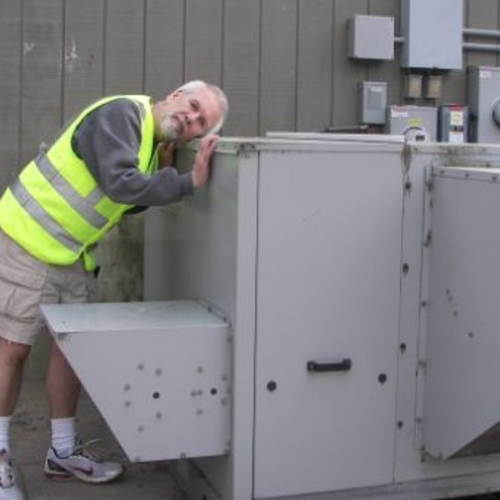
Image Credit: All photos: Joe Nagan
Unlike the homes of our great-grandparents, the homes of most Americans are served by an array of automatic appliances and systems.
When our great-grandparents returned home after a three-day absence, they would need to haul a bucket of water from the spring and light a fire in the kitchen stove before they could brew tea. Today’s homes, of course, have electricity for lighting, a furnace for warmth, an air conditioner for cooling, a water heater for showers, and internet access for Googling.
If one of our modern services is interrupted, residents usually notice within a few hours. Teenagers are often the first to sense that something has conked out. “Dad, there’s no hot water,” they shout, or “Mom! The internet is down!” When the furnace shuts down in January or the air conditioner breaks in July, it doesn’t take long for someone to figure out that something is wrong.
We love our comforts, so most of our appliances are coddled and cared for when they get sick. Yet no one notices the poor HRV in the basement, even when it’s broken. (Remember the children’s classic, Mike Mulligan and His Steam Shovel? Someone should write a children’s story titled Amy, the Aging HRV. The main character would surely be sad, neglected, and lonely.)
The last time I discussed neglected HRVs was in a 2012 blog called Broken Ventilation Equipment Goes Unnoticed for Years. My article was inspired by an e-mail from Joe Nagan, an energy consultant from Wisconsin who is known for his sense of humor. Like other consultants who make site visits, Nagan has a good collection of stories from the field. This week, his latest HRV tale landed in my In box.
An inspector’s eyes
The setting for Nagan’s story is a handsome…
Weekly Newsletter
Get building science and energy efficiency advice, plus special offers, in your inbox.

This article is only available to GBA Prime Members
Sign up for a free trial and get instant access to this article as well as GBA’s complete library of premium articles and construction details.
Start Free TrialAlready a member? Log in















17 Comments
Wicked
You enjoyed that far too much, Martin.
Response to Dan Kolbert
Dan,
I do enjoy my job. Friends like Joe Nagan sometimes make it easy.
I thought the wasp's nest was
I thought the wasp's nest was a bad toupee.
Response to Lucy Foxworth
Lucy,
Among the many objects that have gotten caught in the air intake screen of a ventilation system -- including dog hair, grass clippings, autumn leaves, maple seeds, and road dust -- I'm sure that at some point, at some house, somewhere, a missing toupee was part of the fibrous mix.
lost profit opportunity
Why wouldn't the HTC installer regularly send an e-mail to the customer, reminding him/her that it was time to do routine maintenance? Lots of people either can't or won't change filters or clean intakes.
Response to Stephen Sheehy
Stephen,
Your suggestion (regular e-mail reminders sent by the HRV installer to the homeowner, informing the homeowner that the time has come for a maintenance task) is worth considering. It certainly can't hurt, and would probably nudge some homeowners to check their air intake screens.
Other suggestions I have heard include:
-- Providing each homeowner with an operating manual for their house (a three-ring binder including all of the owner's manuals for all of the home's appliances).
-- Including a wall-mounted interface (designed to be installed in the living room) with LED lights that come on when an HRV maintenance task needs to be attended to.
-- Installing air monitoring equipment that sounds an alarm when indoor air quality is sub-standard.
All of these suggestions have a few advantages and many drawbacks. Concerning your suggestion of an e-mail reminder -- here are a few problems:
-- Everybody's e-mail In box is already full of junk and commercial messages, so most homeowners ignore these e-mails.
-- Even if a homeowner reads the e-mail, he will probably ignore the instructions. "Change your filter now!" doesn't sound particularly urgent if you are busy.
-- Homeowers change their e-mail addresses all the time without notifying their contractors.
-- Homes are sold; the new homeowner will never get that e-mail.
-- Homeowners get divorced; if the husband was supposed to get the e-mail, he may be in the Bahamas with his new squeeze in two years.
reply to martin
Having the installer communicate with the homeowner, by e-mail, snail mail, telephone or whatever, provides a chance for the installer to provide a useful service and get paid for it.
A simple air flow monitor
A simple air flow monitor connected to a warning light (that had the hvac companies name and number on it) would work in most cases. At least until some snot nose kid picks the stick off or somebody paints ove the whole thing
How can we ... by Design, mitigate the risks of clogs
After I built my last home, it did not take birds 2 years to find my kitchen stove exhaust vent as a favorate place to have a nest. that first year we let them have it because my daughter and I heard little baby birds... but in the fall I fixed that problem.
So from a design and installation perspective, I can see placing my intake and exhaust ports close enough to reach so I don't have to climb a ladder 20' up... but I image some really smart inventor already have some super duper cover or "something" to install as you install my intake and exhause vents for my ERV/HRV on the side of the house??? Any ideas or solutions to mitigate some of these bug and debris from clogging my ERV intake?
That said, I'm not saying to skip the regular PM that I enjoy; I am that guy by nature with a hose permanently attached to my water heater for my regular quick flushing. So I look forward to enjoying some PM on my ERV once I get the new house finished :).
Exterior grills
So far this Zehnder exterior grill is working fine on our installation in our building. The louver and screen don't have any bugs in them yet ... so no honey for morning coffee. Maybe next year.
http://www.smallplanetworkshopstore.com/zehnder-exterior-wall-grill-150-6/
Twinfresh and Panasonic
I'm not convinced there is a "necessary distance" between intake and outlet. Panasonic puts both through the same 6" hole, and it looks to me like it will work well:
http://www.westsidewholesale.com/panasonic-fv-wc04ve1.html?keyword=Google_Shopping&mr:trackingCode=F2EF0BFC-0E09-E311-B773-BC305BF933C0&mr:referralID=NA&mr:device=c&mr:adType=pla&mr:ad=48699639205&mr:keyword=&mr:match=&mr:filter=88707695245&gclid=CjgKEAjw2pSdBRCc5Or_vuWw7TgSJAA5txZgNOS1B1GWGaJQwY57bAJxlwyVUnCK0SWWCPhJOsA8JfD_BwE
Here's the hailproof stainless grille from my Twinfresh Comfo
Response to Kevin Dickson
Kevin,
Thanks for posting the photos of your Twinfresh Comfo.
You wrote, "I'm not convinced there is a 'necessary distance' between intake and outlet."
You're right that some HRV and ERV manufacturers have come up with a way to use a single penetration for both the fresh air intake duct and the exhaust duct. The traditional method, however, requires two penetrations -- and many manufacturers specify a minimum distance between these two penetrations. Building codes require that equipment be installed in accordance with manufacturers' instructions -- so that when such minimum distances are specified, they should be adhered to.
Why not place the intake and
Why not place the intake and outlet on Opposite sides of a house? I always wonder why that is not done with high efficiency furnaces. Why does every house with one have those funny looking plastic pipes at the side? It would be a lot less noticeable if one pipe was on one side and the other on the opposite side. Is that allowed?
Response to Robert Connor
Robert,
Q. "Why not place the intake and outlet on opposite sides of a house?"
A. You can do that. Some builders do it that way.
The main reason that your suggested approach isn't more common is that most homeowners prefer this type of penetration to be located on a side of the house that is not visible from the street (in other words, they want the penetrations to be on the least-visited and least-seen side of the house). In such a case, the penetrations usually end up on the same side of the house.
Intake + Exhaust on opposite sides...
Another reason not to put ERV/HRV intake/exhaust on opposite sides of the house is for performance. Opposite side of the house location would typically require some serious lengths of ductwork. The ductwork connecting the ERV to the outside is carrying air that is much closer to the outside temperature than the inside temperature, so you have unwanted heat transfer along the entire length of those ducts. For every 10' of duct connected to the outside, you are reducing your ERV "system" performance by 2-3% (ballpark)...it's a little like deflating the tires in your Pruis to 20Psi...
Response to Robert Connor
Robert asked: "Why not place the intake and outlet on Opposite sides of a house? I always wonder why that is not done with high efficiency furnaces."
Jon's reply: The intake and exhaust should be next to each other so that wind pressures are the same on both of them. Otherwise the safety switch could be fooled into sensing a blocked vent and would shut off the furnace. I mentioned this and some other common furnace venting mistakes in this 1994 article in Home Energy Magazine: http://www.homeenergy.org/show/article/id/1086
What about an earth tube/s intake ten feet below the slab and 80 ft. away and an outlet via the ridge vent or similar opening at the highest point on the house? The stack effect might be strong enough so that opening or closing vents would suffice to ventilate. Opening the vent on your high efficiency wood burning appliance might help ventilate as well.
Log in or become a member to post a comment.
Sign up Log in